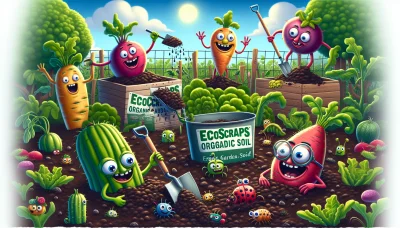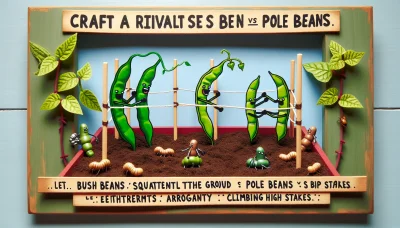Benefits of rambutan Quiz
Test Your Knowledge
Question of
The Surprising Benefits of Rambutan
Rambutan, a tropical fruit native to Southeast Asia, is gaining popularity among gardening enthusiasts for its unique appearance and surprising health benefits. This exotic fruit, with its hairy exterior and sweet, juicy flesh, belongs to the Sapindaceae family, which also includes lychee and longan. Its cultivation, primarily in Thailand, Malaysia, Indonesia, the Philippines, and Vietnam, has caught the attention of gardeners worldwide looking to diversify their fruit gardens. Rambutan trees thrive in warm climates and can add an intriguing aesthetic to any tropical or subtropical garden. Beyond its visual appeal, the fruit is packed with vitamins and minerals, offering a myriad of health benefits and making it a valuable addition to any gardener's repertoire.
Nutritional Value of Rambutan
| Nutrient | Benefit |
|---|---|
| Vitamin C | Boosts the immune system and promotes healthy skin |
| Fiber | Improves digestion and supports a healthy gut |
| Iron | Essential for blood production and oxygen transport |
| Calcium | Strengthens bones and teeth |
| Antioxidants | Protects cells from damage and supports overall health |
Boosting Garden Ecosystems with Rambutan
Growing rambutan in your garden can significantly enhance the ecosystem in various beneficial ways. This tropical fruit tree not only adds beauty and provides delicious fruits but also plays a crucial role in attracting beneficial insects. These insects, in turn, help in pollinating plants and controlling pests, creating a more balanced and healthy garden environment. Moreover, the rambutan tree contributes to improving soil health. Its roots help in stabilizing the soil structure, while the leaf litter adds essential nutrients back into the soil, promoting a fertile ground for other plants to thrive. Thus, incorporating rambutan into your garden can yield a more vibrant, resilient, and productive ecosystem.
Rambutan Cultivation Tips
- Choose a well-draining soil rich in organic matter to ensure healthy growth.
- Maintain soil pH between 5.5 and 6.5 for optimal nutrient uptake.
- Plant rambutan trees in a location where they can receive full sunlight for at least six hours daily.
- Water the trees regularly to keep the soil consistently moist but not waterlogged.
- Apply mulch around the base of the tree to retain soil moisture and regulate soil temperature.
- Prune the tree annually to remove dead or overcrowded branches and promote better air circulation.
- Fertilize the tree with a balanced, slow-release fertilizer to support healthy growth and fruit production.
- Protect young trees from strong winds by providing support or planting in a sheltered location.
- Monitor for pests and diseases regularly and apply organic or chemical controls as needed.
- Harvest rambutan fruits when they turn a bright red color and are slightly soft to the touch.
Pest Management in Rambutan Cultivation
Rambutan trees, while hardy and capable of producing succulent fruits, are susceptible to a variety of pests that can threaten their health and yield. Common pests include fruit flies, which lay their eggs under the skin of the fruit, and rambutan seed borers, which affect the seeds, leading to underdeveloped fruits. Additionally, aphids and mealybugs can sap the strength from the plant by feeding on the sap, leading to weakened trees and reduced fruit production. To manage these pests in an eco-friendly manner, gardeners can adopt several organic practices. Introducing natural predators, such as ladybugs for aphids and mealybugs, can help control their population. Regularly removing affected fruits and maintaining cleanliness around the tree can reduce the incidence of fruit flies and seed borers. Neem oil, a natural pesticide, is effective against a variety of pests and can be applied to the leaves and fruits without harming beneficial insects. By implementing these organic pest management strategies, gardeners can protect their rambutan trees and ensure a healthy, productive crop without resorting to chemical pesticides.
Harvesting and Storing Rambutan
- Wait for the right color: Harvest rambutan when they turn a bright red or yellow, depending on the variety. This indicates they are ripe and ready for picking.
- Use scissors or pruners: Cut the fruit from the tree with a sharp pair of scissors or pruning shears. Leave a bit of the stem attached to prolong freshness.
- Harvest in dry conditions: Try to pick rambutan in the morning after the dew has dried. Wet conditions can promote fungal diseases during storage.
- Handle with care: Rambutan are delicate. Handle them gently to avoid bruising the fruit, which can lead to quicker spoilage.
- Store at the right temperature: For short-term storage, keep rambutan at room temperature in a well-ventilated area. This helps the fruit stay fresh for a few days.
- Refrigerate for longer storage: To extend their freshness, place rambutan in a perforated plastic bag and store in the refrigerator. This can keep them fresh for up to two weeks.
- Avoid moisture accumulation: If storing in the refrigerator, make sure the bag has holes to prevent moisture build-up, which can lead to mold growth.
- Check regularly: Whether storing rambutan at room temperature or in the fridge, check them regularly and remove any fruits that start to spoil to prevent it from affecting others.
Innovative Uses of Rambutan in the Garden
Rambutan, with its unique appearance and delightful taste, is not just a tropical fruit to savor but also a versatile addition to your garden. Beyond its culinary uses, every part of the rambutan can contribute to a more sustainable gardening practice. The peel, often discarded, is a treasure trove for composting enthusiasts. Rich in nutrients, it decomposes into a fertile addition to your garden soil, promoting healthier plant growth. Moreover, the seeds of rambutan, usually overlooked, can be transformed into creative garden crafts. With a little imagination, these seeds can become part of eco-friendly garden markers, adding a personal touch to your green space. Embracing these innovative uses of rambutan not only enriches your garden but also aligns with sustainable gardening habits, reducing waste and enhancing the natural beauty of your outdoor sanctuary.












